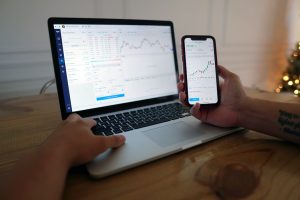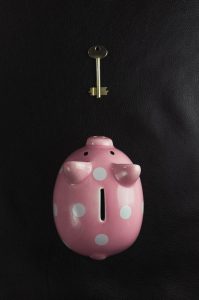Margin on Forex Trading: Explained
Margin is an integral part of forex trading. It is the amount of money a trader needs to put up to open and maintain a forex trade. Margin is the collateral that a trader needs to have available to cover any potential losses that may occur during trading. In this article, we will discuss the concept of margin in forex trading and how it is calculated.
What is Margin?
Margin is the amount of money a trader needs to put up to open and maintain a forex trade. This amount is held as collateral by the forex broker to cover any potential losses that may occur during trading. Margin allows traders to leverage their positions and increase their potential profits. However, it also increases the risk of losses, as traders are trading with borrowed money.
Types of Margin
There are two types of margin in forex trading, initial margin, and maintenance margin.
Initial Margin: The initial margin is the amount of money that a trader needs to put up to open a position in the market. This amount is determined by the broker and varies depending on the currency pair being traded, the size of the trade, and the leverage ratio.
Maintenance Margin: The maintenance margin is the minimum amount of money that a trader needs to maintain in their account to keep a position open. If the trader’s account balance falls below the maintenance margin level, the broker will issue a margin call, requiring the trader to deposit additional funds to cover the losses.
Margin Call
A margin call occurs when the trader’s account balance falls below the maintenance margin level. The broker will issue a margin call, requiring the trader to deposit additional funds to cover the losses. If the trader fails to deposit additional funds, the broker will close out the trader’s position to reduce the risk of further losses.
Calculating Margin
The amount of margin required to open a forex trade is calculated based on the leverage ratio and the size of the trade. The leverage ratio determines how much money a trader can borrow to open a trade, while the size of the trade determines the total value of the trade.
The margin requirement is calculated using the following formula:
Margin = (Size of Trade / Leverage Ratio) x Price of the Asset
For example, if a trader wants to open a trade for 1 lot of EUR/USD at a price of 1.2000 with a leverage ratio of 1:100, the margin required would be:
Margin = (100,000 EUR / 100) x 1.2000 = $1,200
In this example, the trader would need to have $1,200 in their account to open the trade.
Leverage Ratio
The leverage ratio determines how much money a trader can borrow to open a trade. It is the ratio of the total value of the trade to the amount of margin required to open the trade. For example, a leverage ratio of 1:100 means that the trader can borrow up to 100 times the amount of their margin to open a trade.
Leverage allows traders to increase their potential profits by trading with borrowed money. However, it also increases the risk of losses, as traders are trading with borrowed money.
Conclusion
Margin is an essential concept in forex trading. It is the amount of money a trader needs to put up to open and maintain a forex trade. Margin allows traders to leverage their positions and increase their potential profits. However, it also increases the risk of losses, as traders are trading with borrowed money. Traders should understand the concept of margin and how it is calculated to make informed trading decisions and manage their risk effectively.





